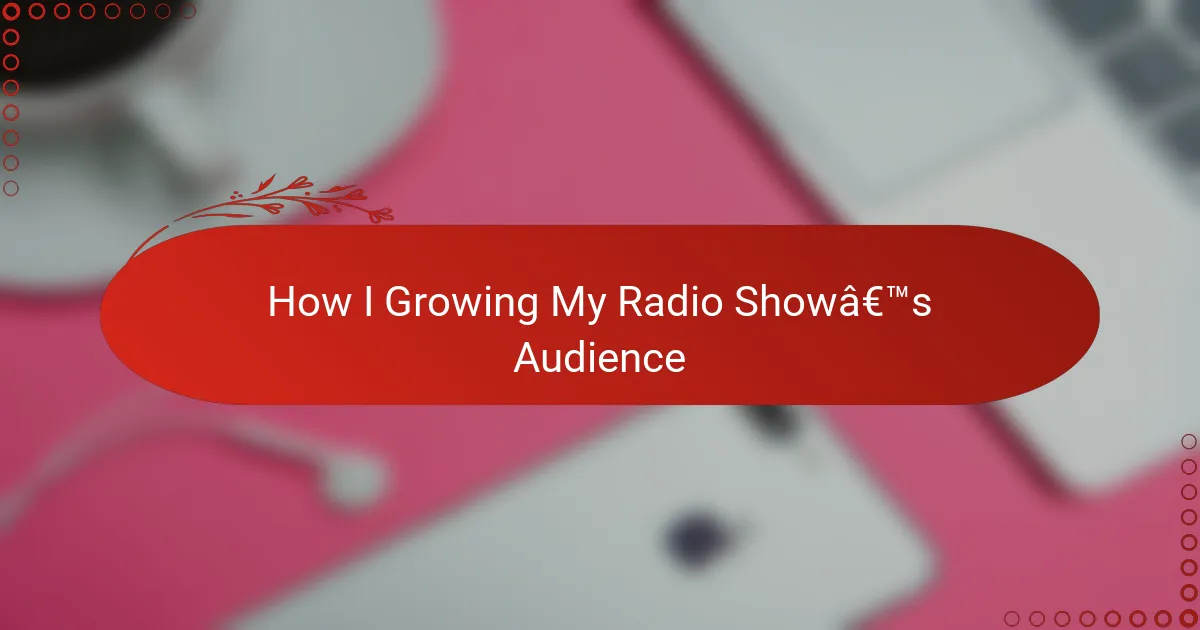Key takeaways
- Understanding signal reach and audience listening habits is essential for effective radio broadcasting.
- Narrowing down your target audience helps create meaningful and personalized content.
- Engaging content mixes various formats and encourages listener interaction, building loyalty.
- Collaborating with other broadcasters introduces fresh ideas and expands audience reach.
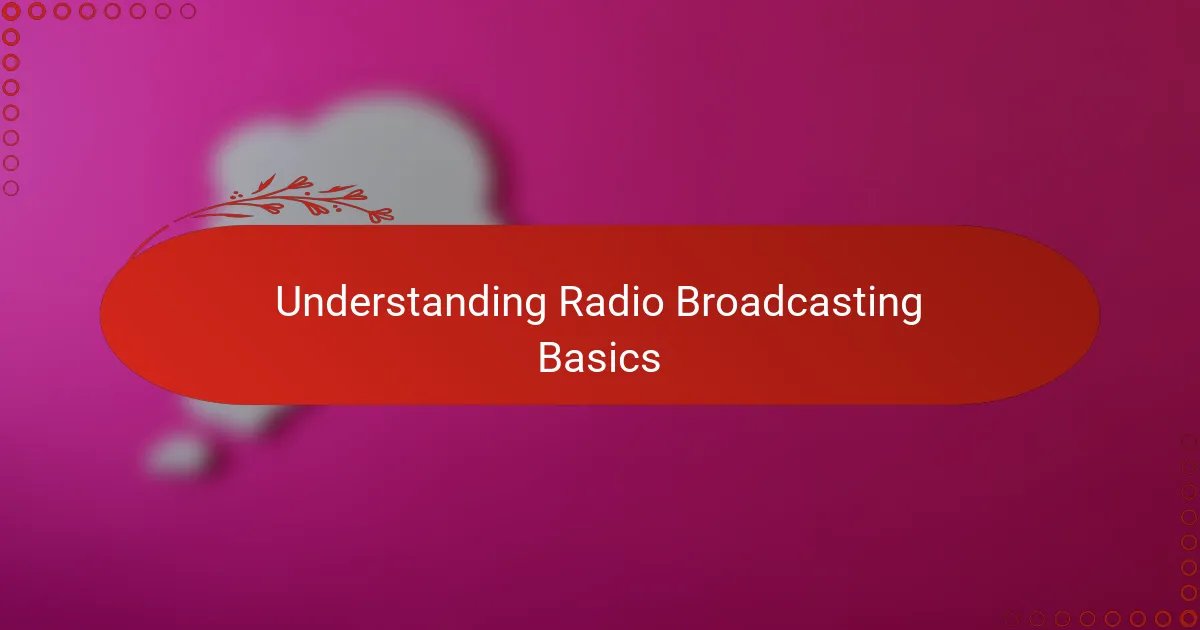
Understanding Radio Broadcasting Basics
Radio broadcasting might seem straightforward—just speaking into a microphone and pressing play on some tracks—but there’s so much more beneath the surface. I remember when I first dove into this world, realizing how crucial understanding signal reach and frequency management was to getting my voice heard clearly. Have you ever wondered why some shows come through crisp and clear while others sound fuzzy? That’s the magic and challenge of mastering broadcasting basics.
One thing that caught me by surprise early on was the importance of timing—how knowing your audience’s listening habits can influence when you go live. It’s not just about what you say or play, but also when you say or play it. This insight completely shifted how I planned my shows and helped me connect with my listeners on a deeper level.
Understanding how the technical side and audience behavior intersect gave me a framework to grow my show with confidence. It’s like learning the rhythm beneath the music, which sets the tone for everything else. Without grasping these core ideas, trying to expand an audience feels like shouting into the void. Have you experienced that too?
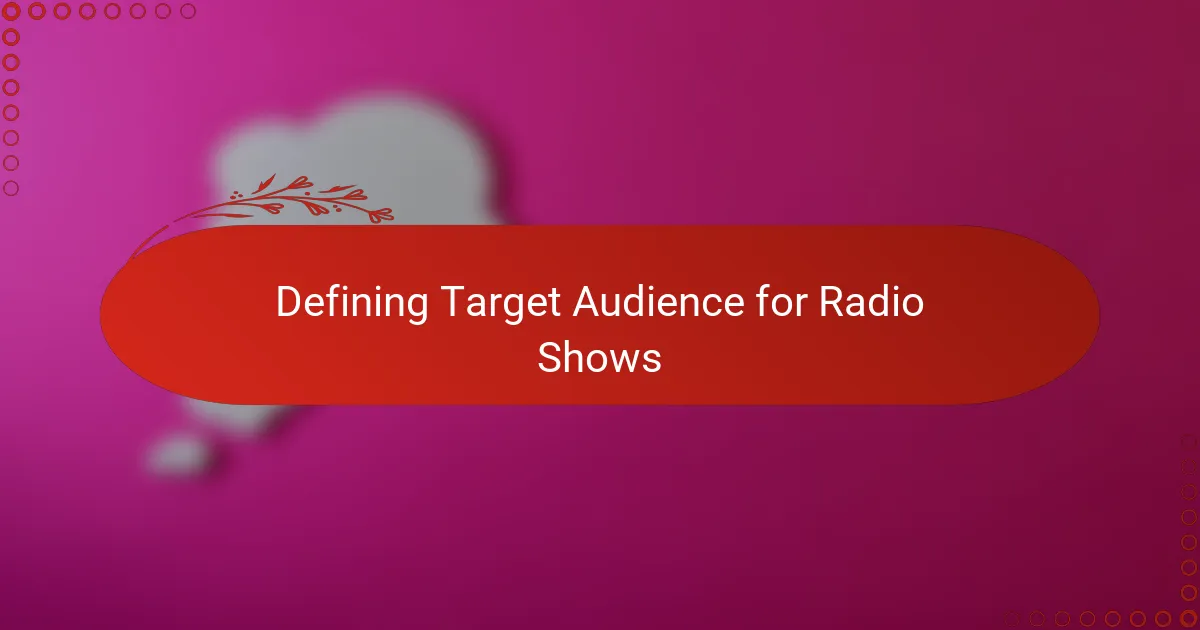
Defining Target Audience for Radio Shows
Pinpointing who exactly you want to reach changed everything for me. At first, I thought a broad approach would attract more listeners, but I quickly learned that casting a wide net often meant connecting with no one deeply. So, I took a step back and asked myself: Who really benefits from the content I’m passionate about sharing?
I realized my audience wasn’t just random radio consumers—it was a community with specific tastes and needs. Narrowing down demographics like age, interests, and even lifestyle gave me a clearer picture of whom to tailor my shows for. Have you ever tried to speak to everyone at once? It’s exhausting and usually ineffective.
Defining my target audience also sparked ideas for personalized content that resonated on a deeper level. Knowing what they care about helped me create segments that felt meaningful rather than generic. It’s like having a conversation with a friend instead of broadcasting into an empty room. Does that kind of connection matter to you as much as it does to me?
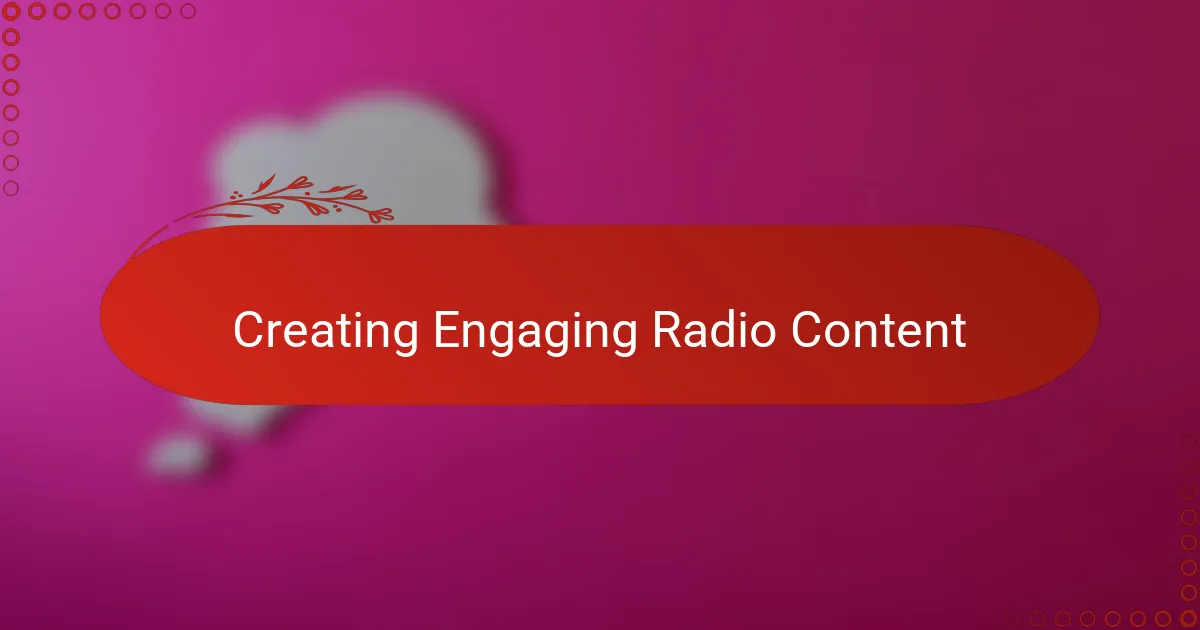
Creating Engaging Radio Content
Creating content that truly grabs attention is both an art and a science. Early on, I found that simply playing music or chatting wasn’t enough—listeners want stories, emotions, and surprises that keep them coming back. Have you noticed how the best shows make you feel like you’re part of something, rather than just hearing background noise?
I started experimenting with mixing formats—interviews, live calls, and themed segments—to break the monotony. This variety didn’t just keep me energized, but it also invited my audience to engage in different ways. When a listener calls in or shares a story, suddenly the show feels alive, and that genuine interaction is what builds loyalty.
One thing I’ve learned is that authenticity shines through every word you speak on air. When I let my true passions and quirks come through, the show becomes more relatable. Do you ever catch yourself tuning in more to hosts who sound real rather than rehearsed? That raw connection is what transforms casual listeners into dedicated fans.
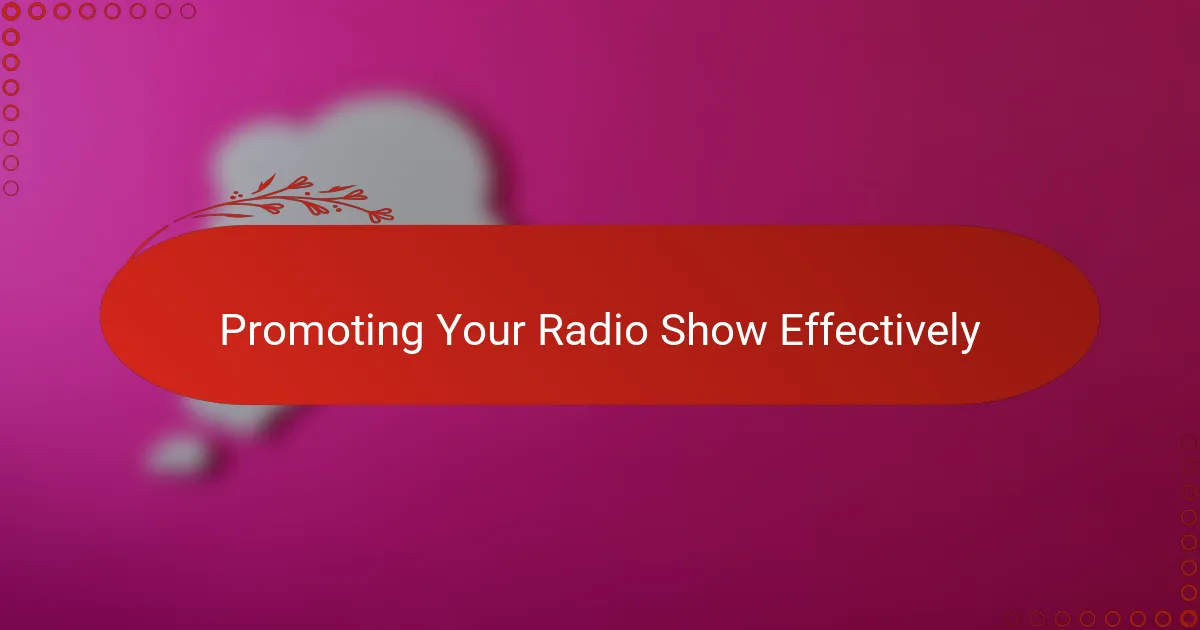
Promoting Your Radio Show Effectively
Promoting your radio show effectively is like making sure your message doesn’t get lost in the noise. Early in my journey, I realized that simply airing my show wasn’t enough—I had to actively share it where my potential listeners spent their time. Social media became my go-to stage, not just for announcements but for sparking conversations that invited people in.
I also learned the power of collaboration. Partnering with other creators or local influencers opened doors to new audiences who trusted those voices already. Have you ever tried reaching out beyond your immediate circle? It can feel daunting, but the payoff is real when fresh listeners start tuning in because someone they respect recommended you.
Consistency played a huge role too. Making sure my show aired like clockwork built trust; people knew when to expect me. And beyond just scheduling, keeping the promotion steady—little reminders, sneak peeks, behind-the-scenes glimpses—helped maintain excitement between episodes. Have you noticed how regular updates keep you hooked on your favorite shows? That’s exactly what I aimed for with my own.
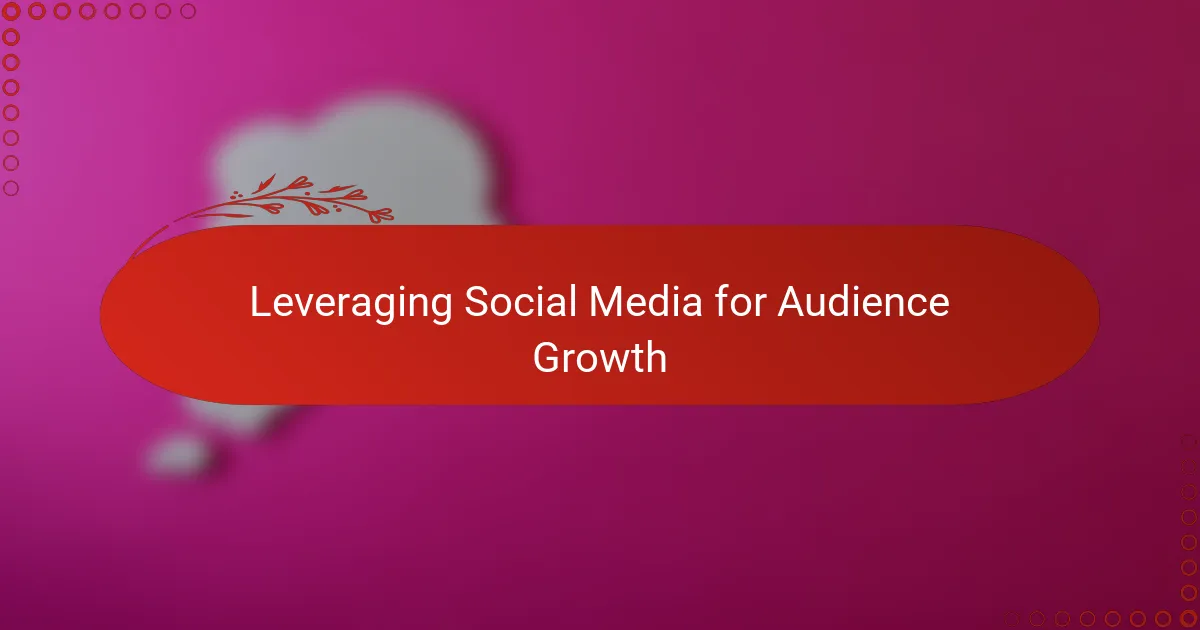
Leveraging Social Media for Audience Growth
Social media quickly became my secret weapon for growing my audience. At first, I simply posted episode links, but I soon realized that wasn’t enough to spark real engagement. Have you ever scrolled past a post because it felt like just another ad? I sure have, and that pushed me to get creative with behind-the-scenes clips and interactive polls that made listeners feel part of the journey.
I also found that responding personally to comments and messages turned casual followers into loyal fans. There’s something powerful about knowing the person behind the show cares enough to interact. It reminded me of those small conversations in the studio that make radio feel intimate — recreating that vibe online helped build a genuine community.
One strategy that surprised me was leveraging live streams on platforms like Instagram and Facebook. Going live gave me real-time feedback and doubled as a teaser for upcoming episodes. When viewers chimed in, it felt less like broadcasting and more like hosting a conversation. Have you tried live streaming as a way to connect? For me, it transformed passive listeners into active participants.
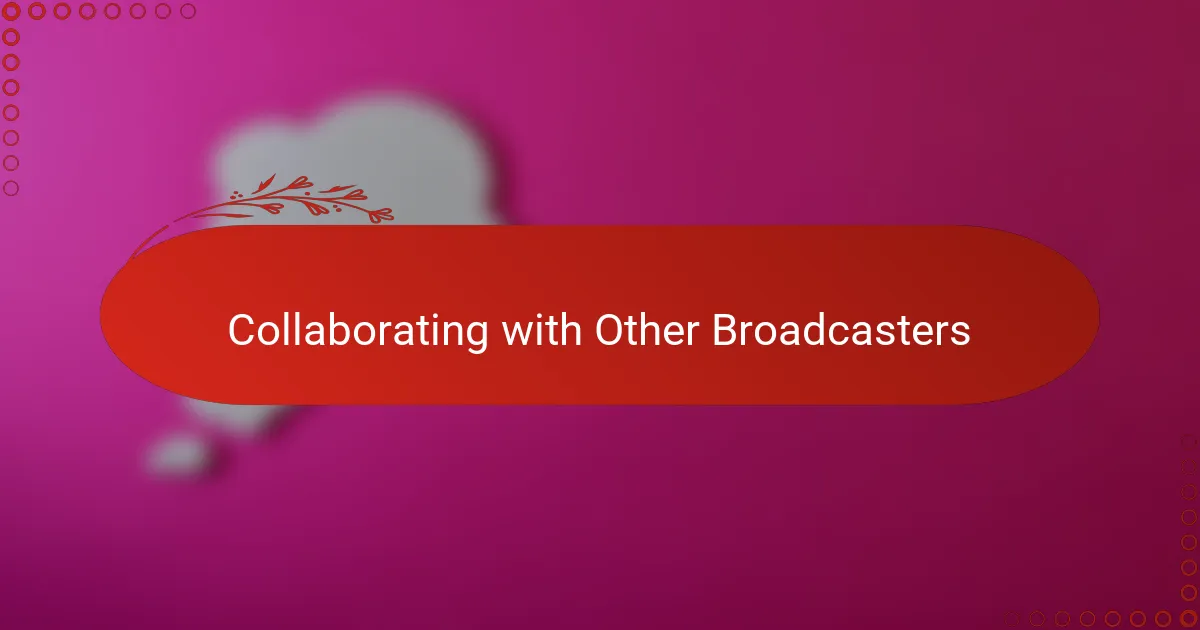
Collaborating with Other Broadcasters
Collaborating with other broadcasters opened up new horizons for me in ways I hadn’t anticipated. When I teamed up with fellow hosts for joint shows or guest spots, it felt like sharing a creative spark that attracted listeners from both sides. Have you ever experienced that moment when two voices blend and suddenly the energy in the studio shifts? That’s the magic of collaboration.
What struck me most was how these partnerships brought fresh perspectives and ideas I hadn’t considered before. It wasn’t just about reaching a wider audience—it was about enriching the content and giving my listeners something unexpected. Sometimes, just inviting a trusted broadcaster to co-host made the show feel more dynamic and spontaneous, like we were discovering the conversation together.
Of course, collaboration takes effort and trust. It means being open to others’ styles and rhythms, which can be challenging at first. But the payoff? A loyal, diverse audience that feels connected to a community rather than a single voice. Have you tried crossing those bridges yet? From my experience, it’s one of the most rewarding steps you can take to grow your show.
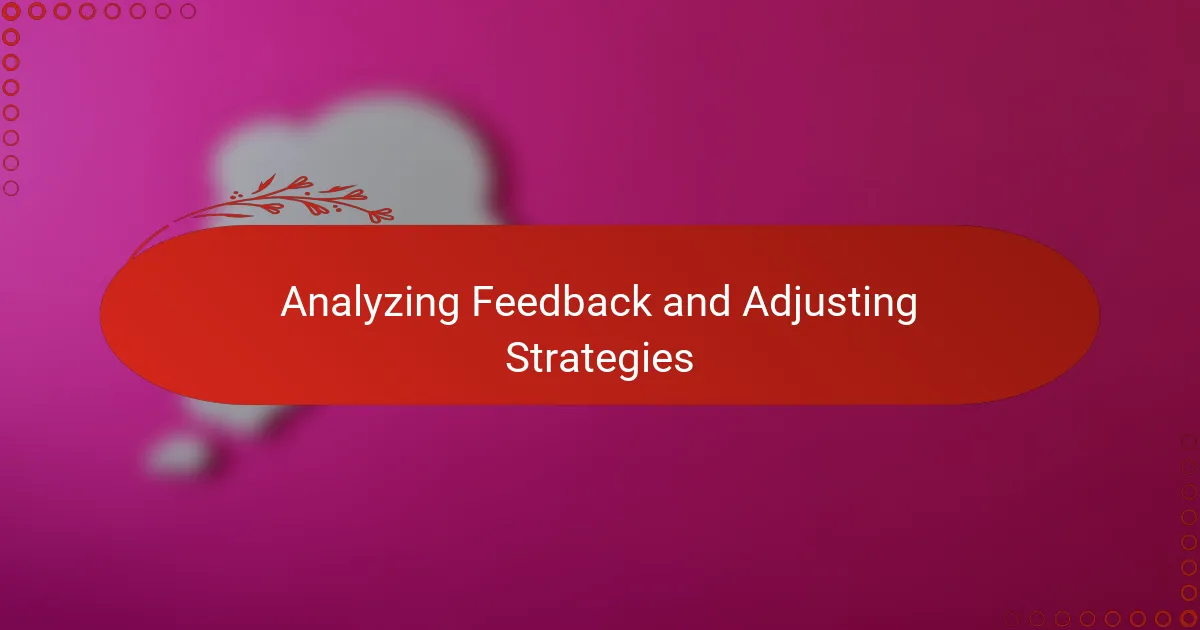
Analyzing Feedback and Adjusting Strategies
Getting honest feedback felt like holding up a mirror to my show—sometimes what I saw was flattering, but other times it revealed blind spots I needed to face. Analyzing listener comments and download stats became a routine, almost like tuning an instrument before a big performance. Have you ever found that small tweaks based on feedback made a huge difference in how your content landed?
Adjusting my strategies wasn’t always comfortable. I recall one episode where I tried a new format after receiving suggestions, and the initial results were mixed. But instead of giving up, I refined the approach and soon noticed listeners responding more positively. It taught me that willingness to adapt is essential—growth doesn’t come from sticking rigidly to your original plan.
This process also made me realize the importance of balancing data with intuition. Numbers tell a story, but so do heartfelt messages and casual chats with listeners. Sometimes, a single passionate comment sparked a change that analytics couldn’t have predicted. Have you experienced that moment when feedback shifted your perspective completely? It’s those moments that keep pushing me forward.
